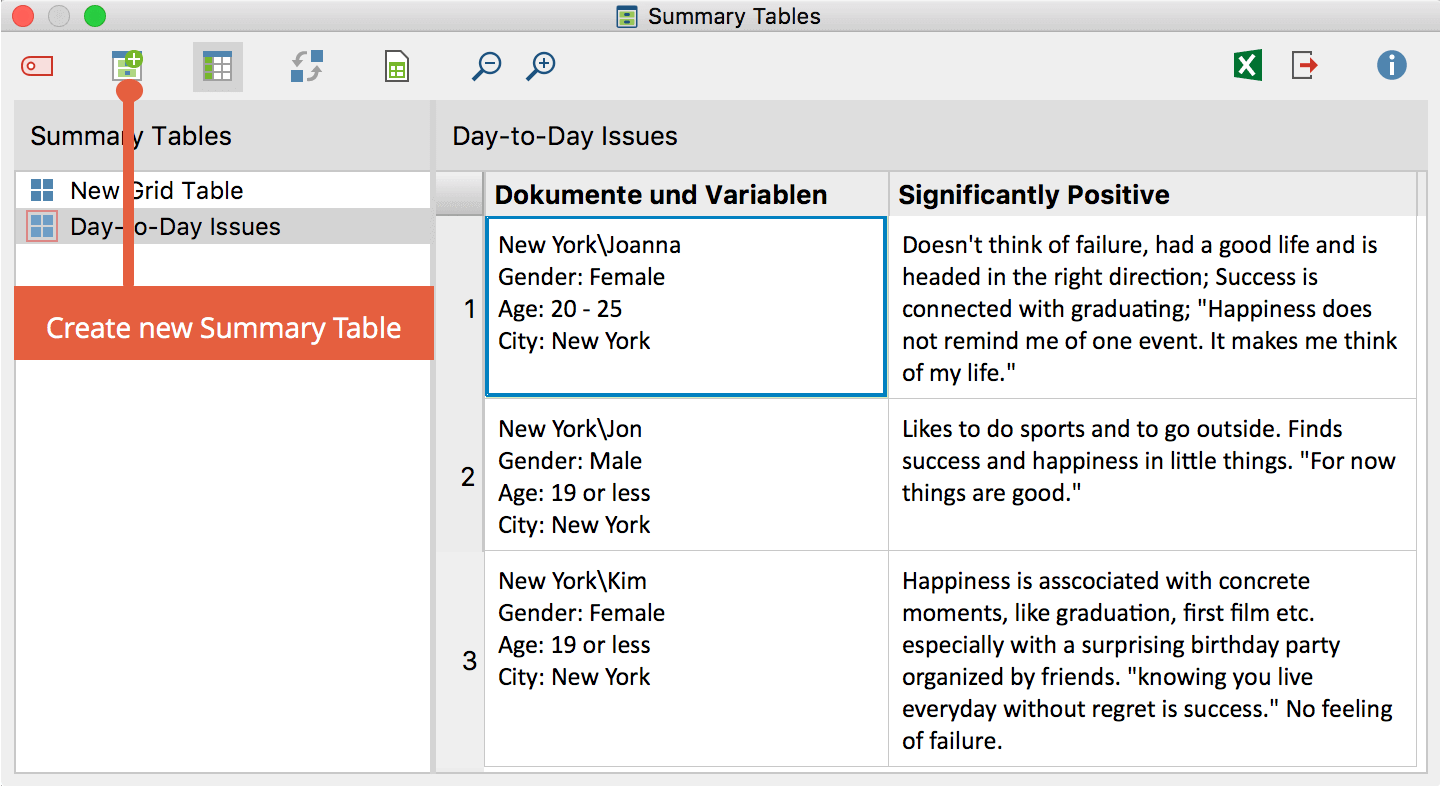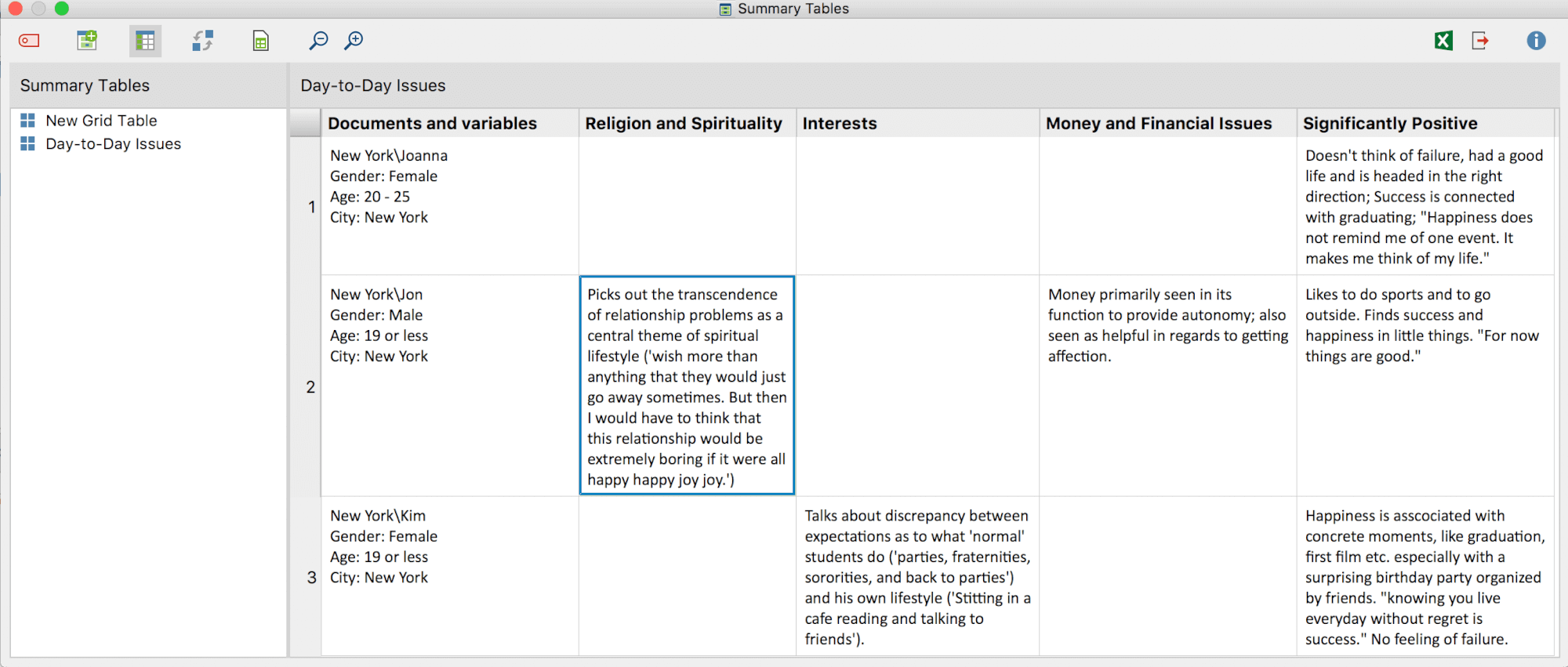
Phenomenology focuses on “ how human beings make sense of experience and transform experience into consciousness, both individually and as shared meaning” ( Patton 2015, p.115). We give an example for each of them: 4.1.1.1 Phenomenology Specific traditions are embedded in the generic methods used in health(care) research we described.
 The analysis using conceptualising categories, aiming at the creation and the refinement of categories to go further than the description, to reach conceptualization of. The thematic analysis, more specifically this is the creation and the refinement of categories to give a global picture of the material.
The analysis using conceptualising categories, aiming at the creation and the refinement of categories to go further than the description, to reach conceptualization of. The thematic analysis, more specifically this is the creation and the refinement of categories to give a global picture of the material. 
The phenomenological examination of the empirical data, aiming to report the authentic comprehension of the material.Intellectual operations for analyzing consist of the transposition of terms in other terms, intuitive groupings, confrontation, induction …Ĭlassically, 3 generic methods of analysis are used in qualitative health (care) research, each of them using specific tools.Technical operations for analyzing are processes, operations and management of the data such as transcriptions, cutting of the text, putting it in tables, etc.
#Maxqda summary grid table how to#
Globally, a generic method for analyzing is used in many situations: How to analyze the data? To get the meaning of the data? It encompasses the technical and intellectual operations and manipulations helping the researcher to catch the meanings.
Permitting within- and between-case searches. Allowing systematic and comprehensive coverage of the data set. (2014), the hallmarks of rigorous and well-founded substantive, cross-sectional qualitative data analysis are: Generally speaking, the analysis process begins with the data management and end up with abstraction and interpretation, from organizing the data, describing them to explaining them ( Spencer et al. But no recipe.” ( Patton 2002)Īlternative traditions vary in terms of basic epistemological assumptions about the nature of the inquiry and the status of the researcher, the main focus and aims of the analytic process ( Spencer et al. No formula exists for that transformation. “ Qualitative analysis transforms data into findings. “ Unlike quantitative analysis, there are no clear rules or procedures for qualitative data analysis, but many different possible approaches” ( Spencer et al. There are several ways to analyze textual data. To explain a phenomenon or gain insight in a problematic situation. To compare several cases (individuals or groups) with focus on what they have in common or on the differences between them. To describe a phenomenon in some or greater detail. The aims of qualitative data analysis are multiple, for example: “ The classification and interpretation of linguistic (or visual) material to make statements about implicit and explicit dimensions and structures of meaning-making in the material and what is represented in it” (p. Flick ( Flick 2015) defines qualitative data analysis as follows: In general qualitative data analysis means moving from data to meanings or representations. 
“Qualitative data analysis (QDA) is the range of processes and procedures whereby we move from the qualitative data that have been collected into some form of explanation, understanding or interpretation of the people and situations we are investigating”.







 0 kommentar(er)
0 kommentar(er)
